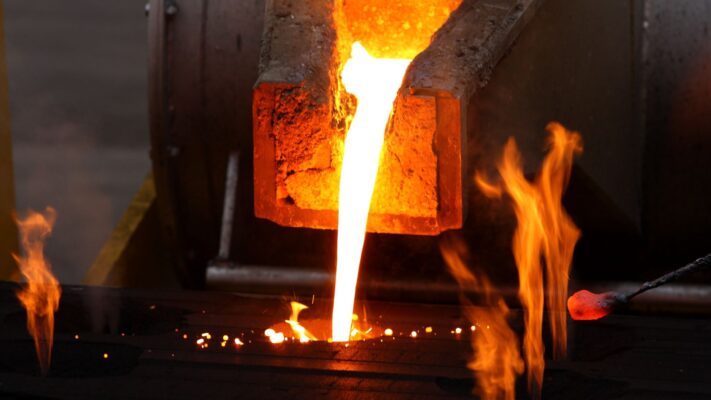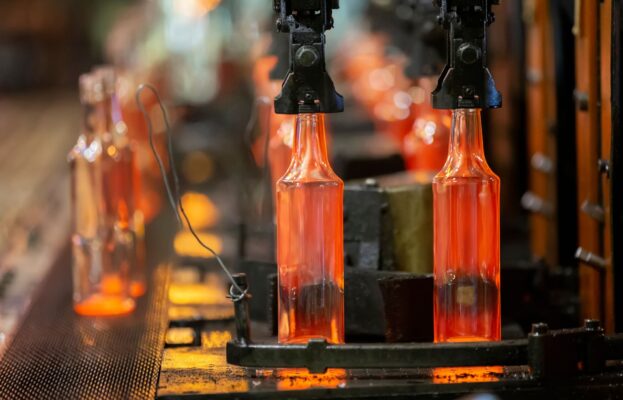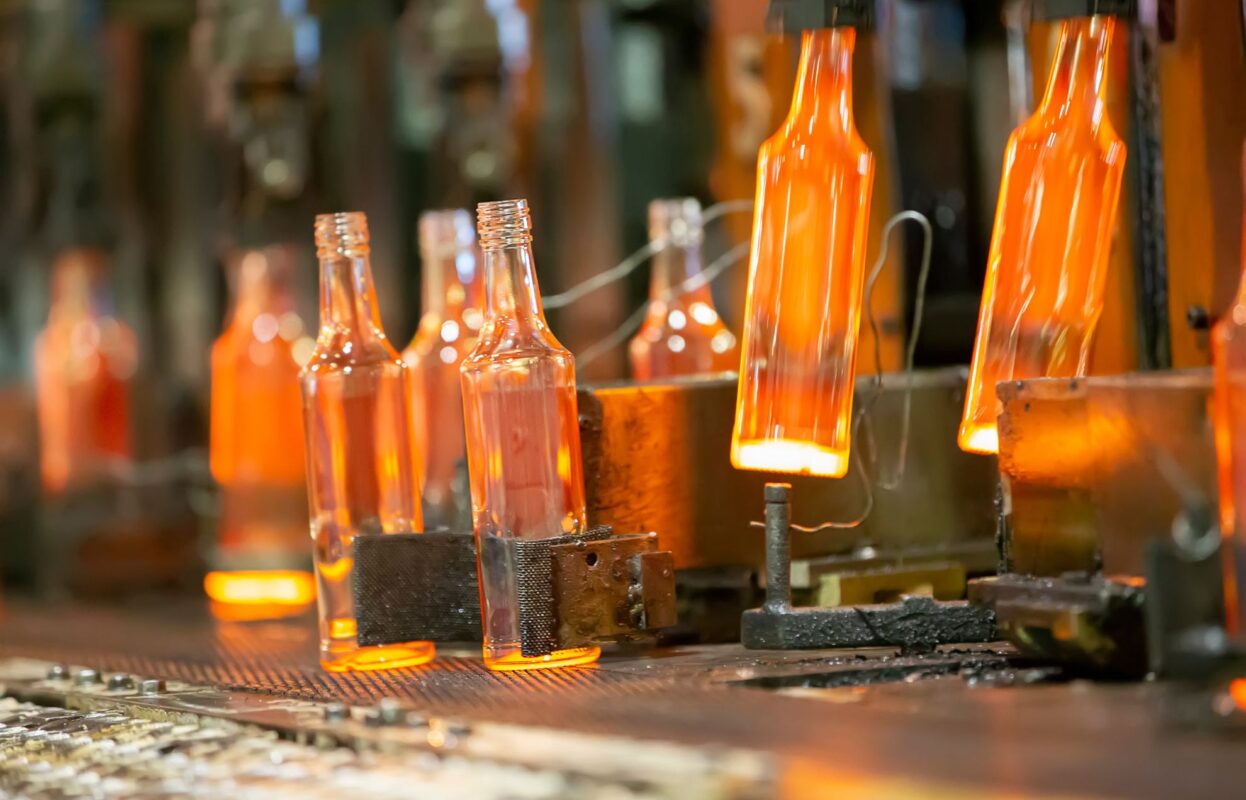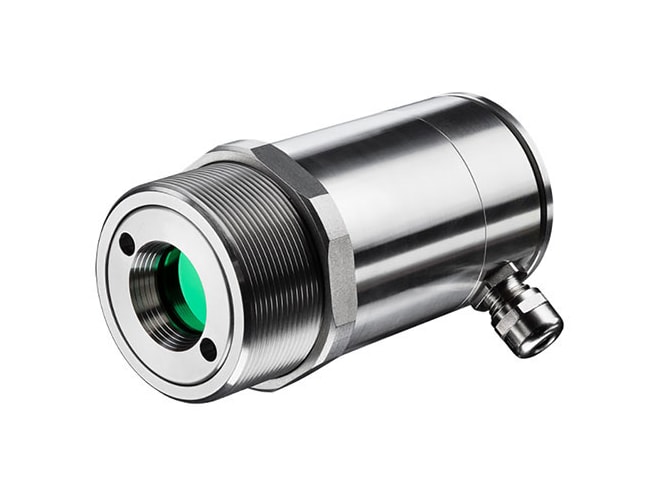Use of Temperature Sensors in Glass Manufacturing Process
Temperature Control in the Glass Manufacturing Industry and Glass Furnaces
The glass manufacturing industry is the production of various types of glass, including flat glass, container glass, and speciality glass. It involves processes such as melting, forming, annealing, and finishing. The industry serves diverse sectors like construction, automotive, packaging, and electronics, contributing significantly to global manufacturing and infrastructure.
The glass manufacturing process is a complex and energy-intensive endeavour, requiring precise temperature control to ensure high-quality output. Temperature sensors are crucial in monitoring and regulating temperature throughout the various stages of glass production.
This article delves into the significance of temperature control in glass manufacturing. We explore different types of temperature sensors used, discuss their applications across the process, and highlight the benefits they bring.
The Glass Manufacturing Process
- Gathering Raw Materials: The production of most types of glass involves using natural raw materials referred to as “batch”. These materials, including sand, soda ash, limestone, and sometimes iron and carbon for colouration, are stored in large silos. Coloured glass, such as green or brown glass bottles, can be created by incorporating these additives into the mixture.
- Melting Process: The batch is continuously fed into a melter in the next step of the glass manufacturing process. The materials are blended together and gradually transformed into molten liquid glass. This molten glass will later be shaped into the desired form. The glass-making process requires high temperatures, reaching up to 1500°C.
Due to the extreme heat and 24/7 operation, the glass furnace undergoes a rebuild every 8-10 years. This regular maintenance ensures the furnace remains in proper working condition to sustain the intense manufacturing process.

Importance of Temperature Control in Glass Manufacturing
Accurate temperature control is paramount in glass manufacturing due to its direct impact on the final product’s quality and properties. Even slight temperature variations can affect outcomes, making maintaining optimal temperatures at each stage of production critical.
If the temperature is too high, the glass may become brittle and prone to cracking. If the temperature is too low, the glass can be too soft and difficult to work with.
Temperature sensors help to ensure that the temperature of the glass is always within the desired range.
At Process Parameters, we provide temperature infrared sensors and thermal imaging cameras, working with our customers to ensure they have the right kit for the job. Whether you’re producing packaging, doors and windows, or technology for professional applications such as medical and radiation protection, we ensure accuracy and safety throughout your production process.
Contact UsHigh Performance Series
High Performance Series
Compact Series
Types of Temperature Sensors Used in Glass Manufacturers
Various types of temperature sensors find applications in glass manufacturing, such as thermocouples, resistance temperature detectors (RTDs) and infrared pyrometers, offering different advantages based on specific requirements.
Process Parameters specialise in infrared sensors and industrial thermal imaging cameras for the glass manufacturing industry. If you’d like to find out more, speak to one of our dedicated team today.
Related:
Applications of Temperature Sensors in Glass Manufacturing
Glass manufacturing typically consists of the following stages:
- Raw materials preparation
- Melting
- Forming
- Annealing
- Heat treatment
Temperature sensors are used throughout the glass manufacturing process, enabling monitoring and control at critical stages. They facilitate:
- Furnace temperature monitoring: Ensuring precise temperature regulation within the furnace to facilitate efficient melting and refining of raw materials. This information is used to adjust the fuel flow to the furnace to ensure that the temperature of the glass is maintained at the desired level.
- Glass formation temperature monitoring: Monitoring temperature during shaping processes such as blowing, pressing, or drawing, ensuring optimal glass viscosity for desired shape formation. This information is used to adjust the speed and pressure of the forming process to ensure that the glass is formed to the desired specifications.
- Glass cooling temperature monitoring: Facilitating controlled cooling of glass to enhance strength and prevent thermal stresses.
- Glass treatment temperature monitoring: Monitoring temperature during processes like annealing or tempering to achieve desired mechanical and thermal properties.

Benefits of Using Temperature Sensors in Glass Manufacturing
- Improved glass quality: Precise temperature control leads to consistent glass properties, reducing defects and enhancing overall product quality.
- Increased production efficiency: Accurate temperature monitoring optimises energy consumption, reducing waste and improving production efficiency.
- Reduced energy costs: By enabling efficient energy utilisation, temperature sensors contribute to energy savings, lowering operational costs.
- Enhanced safety: Temperature sensors help maintain safe working conditions by preventing overheating or other temperature-related hazards.
Sensors for the Glass Manufacturing Industry
Temperature sensors play a vital role in the glass manufacturing industry. They enable precise temperature control throughout various stages, ensuring high-quality glass production. Even small changes in temperature can have a significant impact on the quality of the glass.
Manufacturers can achieve improved product quality, enhanced production efficiency, reduced energy costs, and heightened safety measures by utilising temperature sensors.
When beginning to implement temperature sensors within your glass manufacturing process, you might consider the following challenges.
- The high temperatures involved in the manufacturing process
- The corrosive nature of the glass
- The need for accurate and reliable temperature sensors in real-time
Our team of experts here at Process Parameters will be able to assist you with choosing the right equipment for your specific applications.
Process Parameters was formed in 2004 as a UK-based manufacturer and distributor of temperature measurement and control equipment. We have developed an enviable reputation for supplying excellent quality and value-for-money products to the glass industry and beyond.
For further information please email us at sales@processparameters.co.uk or call 01628 778788.
Send An EnquiryHigh Performance Series
High Performance Series
Compact Series
FAQs
How do you measure the temperature of glass?
To measure the temperature of glass, you can use a non-contact infrared thermometer. Point the thermometer at the glass surface, and it will detect the thermal radiation emitted by the glass, providing an accurate temperature reading.
What is the temperature of glass manufacturing?
In the glass manufacturing process, raw materials are mixed in a silo and then moved to a five-chambered furnace, where they melt at temperatures reaching up to 1600°C (2,912°F). The molten glass is then floated on a bath of molten tin, which is maintained at a temperature of about 1000°C (1,832°F).
Related: Temperature of a Glass Melting Furnace
What sensors are used in the glass manufacturing industry?
Sensors play a vital role in ensuring the quality, efficiency, and safety of glass production processes in the industry. Various sensors are used for monitoring and control purposes in the glass industry, including:
- Temperature Sensors: These are crucial for measuring furnace temperatures during glass melting and forming processes. Thermocouples, RTDs (Resistance Temperature Detectors), and infrared sensors are commonly used.
- Pressure Sensors: They monitor and control pressure in glass moulding and forming equipment to ensure proper shaping and quality.
- Level Sensors: Used to maintain precise levels of molten glass in furnaces and moulds, preventing overflows or underfills.
- Flow Sensors: Ensure a consistent flow of raw materials and molten glass in the production process.
- Infrared Pyrometers: Measure the temperature of the glass surface during manufacturing processes, helping to control the shaping and cooling.
- Viscosity Sensors: Monitor the viscosity of molten glass, which affects the forming and shaping process.
- Thickness Sensors: Measure the thickness of glass sheets or containers to ensure uniformity.
- Colour Sensors: Check the colour of the glass to maintain quality and consistency in coloured glass production.
- Gas Analysers: Monitor the gas composition within furnaces to optimise combustion and reduce emissions.
- Proximity and Position Sensors: Used in automated handling and packaging systems for accurate positioning of glass products.
Related Articles:
- Guide to Temperature Sensors For Glass Melting Furnaces
- How Does a Thermal Imaging Camera Work?
- Choosing an Infrared Pyrometer
- Why is a Pin Sharp Thermal Image Important?
- How Can a Thermal Imaging Camera Become Part of Your Process?
- Can You Improve Your Thermal Efficiency With Imaging Cameras?
- Comparing Contact and Non-Contact Temperature Sensors
- A Guide to Industrial Sensors
- What Is A Temperature Sensor?
- What is a Thermocouple?




